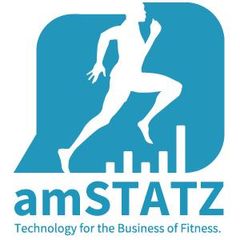Health and fitness professionals who are thinking about starting a personal training business or who want to grow their existing personal training businesses may eventually need to make a sizeable investment now to reap profits later. But this cannot be done without first understanding how to calculate the return on investment, commonly referred to as ROI. This calculation is critical to making an informed decision when it comes to starting a personal training business.
What is ROI?
ROI = (Gains - Cost)/ Cost
Take the gains you make on the investment and subtract the cost. Next, divide that number by the cost of the investment.
Let's use the example of investing in personal trainer software.
You invest $34/month in personal trainer software that allows you to save time, stay organized and grow client relationships. If this investment nets you an additional $50 per month, from an additional one-on-one training session, or from helping you retain a single client, what is the ROI?
ROI = ($50 - $34) / $34
$16/$34 = .47, or,47%
Not only do you cover the cost of the personal trainer software in just one month, you earn a 47 percent return on your investment. And that's being conservative. What if you added $100/month to your net revenue? ($100 - $34)/$34 = 1.94, or 194 percent ROI.
For comparison, you could (conservatively) expect a 5 percent return on your investment through investing money in the stock market.
If you could make a 5 percent return on investment or a 47% return on investment, which one would you choose? Starting a personal training business means thinking about ROI, and putting that figure into perspective.
Starting a personal training business is about perspective.
Because ROI is a percentage, it can clear up confusion caused by just looking at dollar-value returns. Imagine you have two friends, Jack and Diane, and they are telling you about some investments they just made. Diane made $100 investing in stock options, while Jack earned $10,000 by investing in a new condominium development in Dade County, Fla. At first glance, you'd probably wish you had invested with Jack. He made $10,000! But how much did it cost Jack achieve his return? What was the return on his investment?
If Jack had to spend $100,000, he has an ROI of 10 percent. If Diane spent $200, she'd have a return of 50%. That means Diane's ROI is five times greater than Jack's ROI.
Whether you're trying to determine the ROI of investing in a larger space for more group fitness classes, or the ROI of purchasing some exercise stretch bands, the calculation is the same for every investment. Starting a personal training business requires that you think about these investments carefully.
Go beyond ROI when starting a personal training business.
ROI is a relatively simple calculation that tells you the bottom line return of any investment. However, one major factor that doesn't appear in an ROI calculation is the investment of time. Returning to our original example, what if Diane's investment took five years to pay off and Jack's took 18 months? At this point, you'd want to spend time looking at Compound Annual Growth Rate (CAGR).
Take a measured approach to the money you spend to grow your fitness business. A $34 investment in personal trainer software, for example, is relatively low risk, with a relatively high potential ROI. So, how many of these low-risk, high-return investments can you make in starting a personal training business?
This article originally appeared on amstatz.com.




 by
by 










 by
by